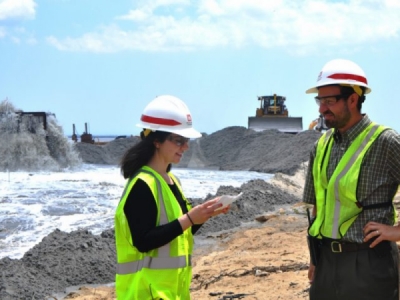
Posted on September 28, 2020
Beach replenishment projects continue at the Jersey Shore, with another round slated to begin soon in northern Monmouth County.
The project involves the periodic nourishment of beaches in Long Branch, Monmouth Beach and Sea Bright, according to the Army Corps of Engineers.
The work, announced by U.S. Rep. Frank Pallone, Jr., D-N.J., will begin next week to restore about one million cubic yards of sand to beaches that suffer from erosion caused by tidal activity and storms.
“These additional replenishment projects are critical to our beaches and communities along the Jersey Shore,” Pallone said in a prepared statement. “After Hurricane Sandy made landfall in New Jersey in 2012, coastal restoration projects like beach replenishment ensured that our beaches would remain resilient as we rebuilt our communities.
The Army Corps of Engineer plan calls for the work to finish by the end of November, barring any weather or mechanical delays.
It’s the latest in a years-long string of beach replenishment projects in New Jersey that have spanned all four coastal counties. Many of the projects have resulted in several hundred feet of expanded beach width, with dunes more than 20 feet high.
Critics have questioned the efficacy of the replenishment program, citing the need to buy out flood-prone areas, elevate homes and restore natural ecosystems. In 2019, the Surfrider Foundation, an international nonprofit environmental advocacy organization, gave New Jersey a poor grade for its coastal management practices.
Among the numerous recommendations, the report says the state should reduce its reliance on sand replenishment, utilize other methods of beach preservation, improve rebuilding standards after storms, prohibit new development in known hazard areas, establish managed retreat policies and develop sea-level rise adaptation plans.
New Jersey started working on a Coastal Resilience Plan in October 2018 to protect a regional backbone in addressing climate change and extreme weather impacts instead of more isolated, localized efforts. Its release is scheduled for September 2020.
The plan seeks to reduce the impacts of coastal hazards; increase resilience for structures, infrastructure systems, environmental resources, and coastal communities; address the needs of socially vulnerable populations, and attract equitable and sustainable investment.
Source: whyy.org





